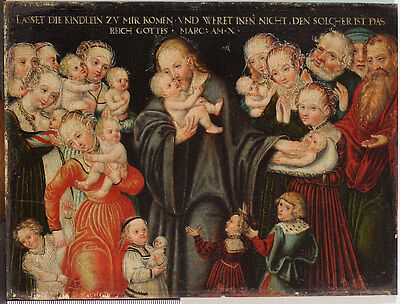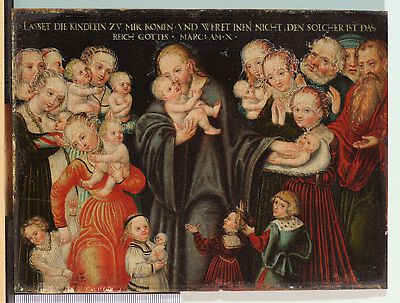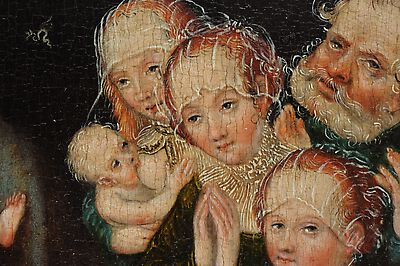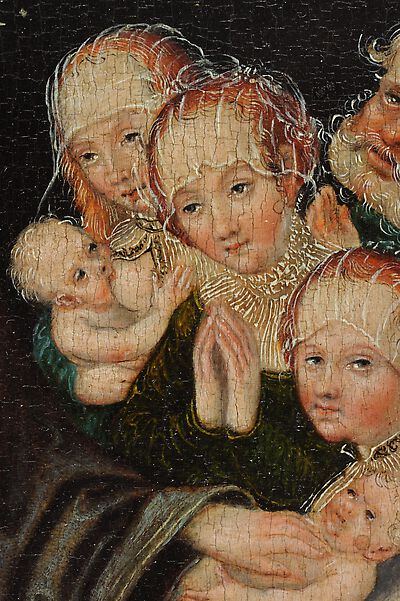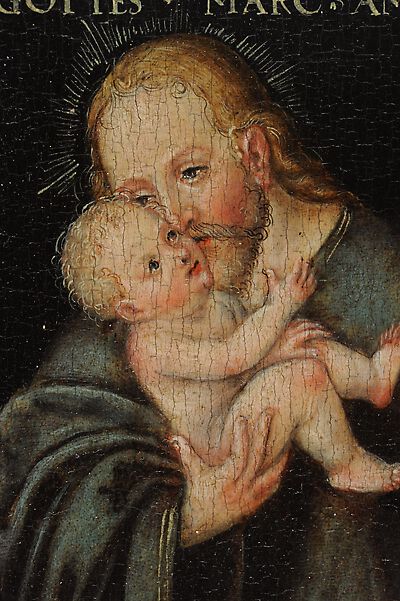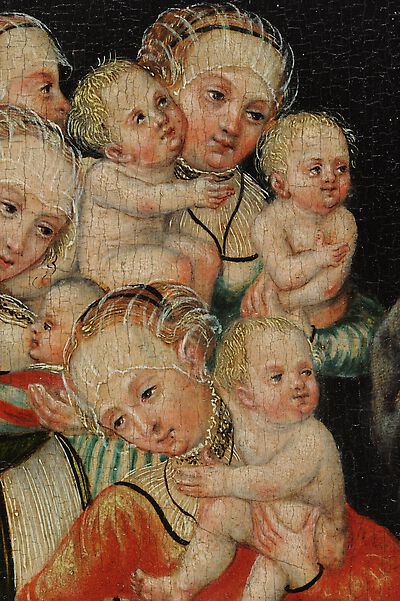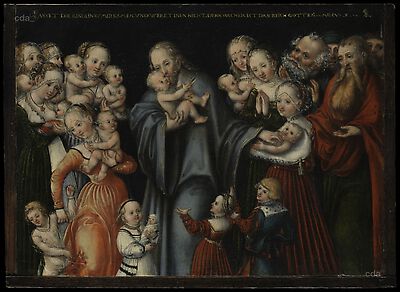- Attributions
-
Workshop Lucas Cranach the Elder
Lucas Cranach the Younger
Attributions
| Workshop Lucas Cranach the Elder | [cda 2010] 'Nach Lucas Cranach der Jüngere [...] The throng of figures and the diffuse representation of facial features suggests the work of an independent member of the workshop, like for example Augustus Cordus, [...]' |
| Lucas Cranach the Younger | [Exhib. Cat. Gotha/Kassel 2015, 202] |
| Albrecht Altdorfer | 'von Albrecht Durrens Lehr-Meister, Albrecht Altdorff, gemahlt'[1] |
- Production date
- about 1540 - 1550
Production date
| about 1540 - 1550 | [Exhib. Cat. Gotha 2015, No. 57] [Schade, Exib. Cat. Gotha 1994, 53] |
- Dimensions
- Dimensions of support: 14.8 x 19.7 x 0.2 cm
Dimensions
Dimensions of support: 14.8 x 19.7 x 0.2 cm
[cda 2010]
- Signature / Dating
Artist's insignia at the top in the centre, to the right of Christ's head: winged serpent with dropped wings; in yellow paint
Signature / Dating
Artist's insignia at the top in the centre, to the right of Christ's head: winged serpent with dropped wings; in yellow paint
- Inscriptions and Labels
- below the top edge:
'LASSET DIE KINDLEIN ZV MIR KOMEN. VND WERET INEN NICHT, DEN SOLCHER IST DAS REICH …Inscriptions and Labels
Inscriptions, Badges:
- below the top edge:
'LASSET DIE KINDLEIN ZV MIR KOMEN. VND WERET INEN NICHT, DEN SOLCHER IST DAS REICH GOTTES: MARC: AM. X.'
Stamps, Seals, Labels:
Reverse of panel: - top left:
written in red 'ML' (linked)
- top right:
written in black: a horizontal 'L'
[Exhib. Cat. Gotha 1994, 53]
- centre:
in red ink: 'Zentral-Museum/Gotha/6/(365)'
- bottom left:
printed yellow label: 'Schloßmuseum Gotha/Inv.-Nr.:/S.G. Nr.:/Alte Nr.:'; handwritten in black ink: '46', '6', '365 Ahv.'
- Owner
- Stiftung Schloss Friedenstein, Gotha
- Repository
- Stiftung Schloss Friedenstein, Gotha
- Location
- Gotha
- CDA ID
- DE_SMG_SG6
- FR (1978) Nr.
- FR-none
- Persistent Link
- https://lucascranach.org/en/DE_SMG_SG6/
- below the top edge:
